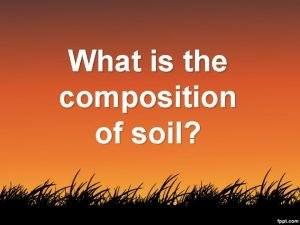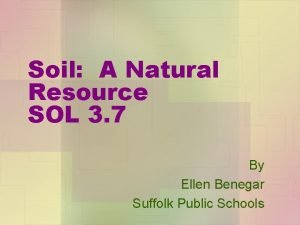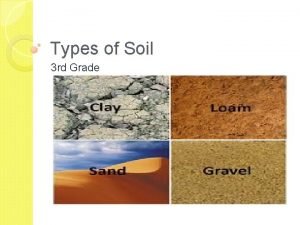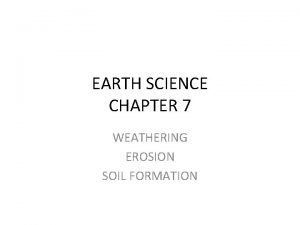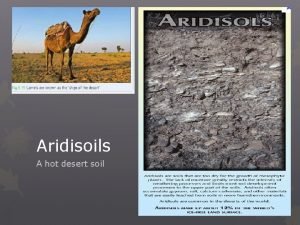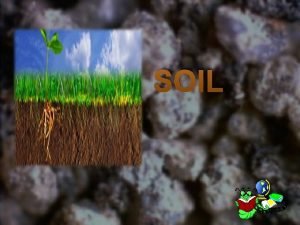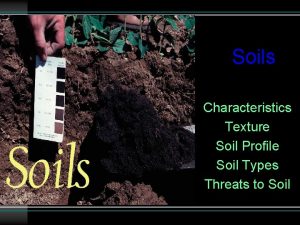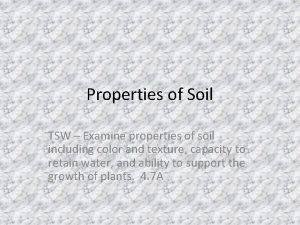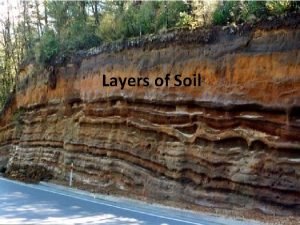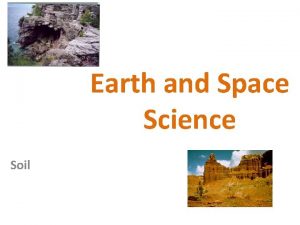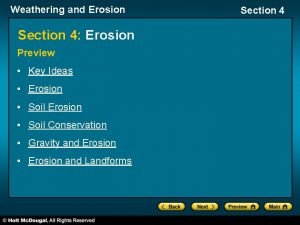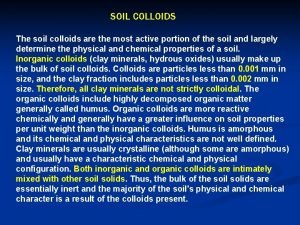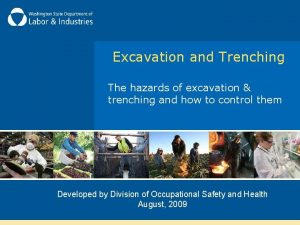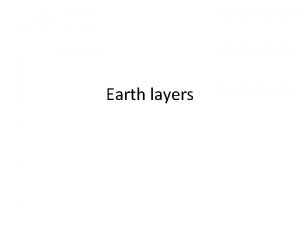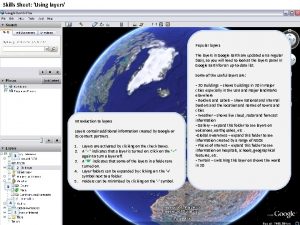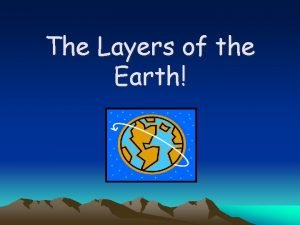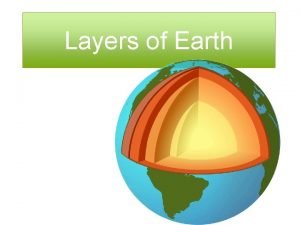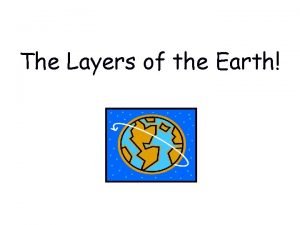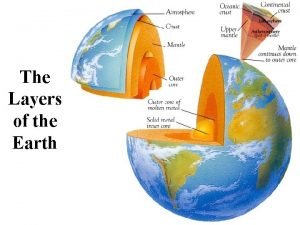Layers of Soil Types of Soil Types of


















- Slides: 18

Layers of Soil, Types of Soil, & Types of Rocks By Jessica Fisher 4 th Grade Learning Center Adapted from Danielle Ruff Cartersville Elementary School

Layers of Soil is a very important resource. ◦ Soil is what plants grow in. ◦ Some animals live in soil. Soil is a mixture of many different things. ◦ Soil is made up of: water Air Humus tiny pieces of rock.

Humus is the part of soil that is made up of parts of dead plants and animals (organic matter). ◦ Example: When a tree loses a leaf, the leaf falls to the ground. As the leaf breaks down into smaller parts, it becomes humus. ◦ The soil close to the surface has a lot of humus.

Soil Layers

Top Soil (A Horizon) The top layer is called topsoil. Topsoil has a lot of humus and organic matter. Many small animals, such as ants and earthworms, live in topsoil. It is the darkest layer of soil because of all the organic matter. It is also made of mineral matter (sediments), water, and air.

Subsoil (B Horizon) The layer underneath topsoil is called subsoil. Subsoil does not have a lot of humus, but it does have small rocks in it.

Weathered Rock Fragments (C Horizon) More Little rocks than subsoil to no plant and animal life in this layer

Bedrock (D Horizon) If you dig deep enough into soil, you will reach solid rock. This solid rock is called bedrock. Most small rocks in soil come from the bedrock underneath it. This is also known as parent material. This will eventually become topsoil through erosion over a course of many, many years.

Different Types of Soil In the United States alone there are more than 70, 000 types of soil. ◦ Different colors ◦ Hold more or less water ◦ Size of rocks found in them ◦ Different minerals make different soils

Sand Soil with grains of rock that you can see with your eyes alone. Feels rough and coarse, grainy.

Silt Soil with grains of rock that are too small to be seen with your eyes alone. It feels smooth.

Clay Soil with very tiny grains of rock

Loam Soil that is a mixture of humus, sand, silt, and clay Best type of soil for growing fruits and vegetables in.

Importance of Soil Bricks, pottery, and other items are made from clay soil. Many animals would have no where to live without soil. Plants would not be able to grow without soil. Bacteria and fungi also live in soil.

Rocks in Soil Minerals are the “building blocks” of rocks. 3 types of Rocks ◦ Sedimentary ◦ Igneous ◦ Metamorphic

Sedimentary Rocks Made of small mineral matter called sediments Made from pressure over a long period of time. Examples: sandstone, limestone

Igneous Rocks Molten rock/magma solidifies Small air holes Intrusive igneous = cooling below Earth’s surface ◦ Example: Granite Extrusive igneous= cooling above Earth’s surface ◦ Examples: pumice

Metamorphic Rocks Made of sedimentary rocks and igneous rocks that morph into metamorphic rock. Made by heat, pressure, and time. Examples: marble, slate Used for building
 Layer of soil
Layer of soil Three layers of soil
Three layers of soil 3 layers of soil
3 layers of soil Layers of soil
Layers of soil A vertical sequence of soil layers
A vertical sequence of soil layers Desert soil horizons
Desert soil horizons Porosity of soil
Porosity of soil Bedrock
Bedrock Soil profile diagram
Soil profile diagram Tsw properties
Tsw properties 4 types of soil
4 types of soil Layers of soil
Layers of soil Living soil vs dead soil
Living soil vs dead soil Four major spheres of the earth
Four major spheres of the earth Types of soil erosion
Types of soil erosion Types of soil colloids
Types of soil colloids Soil types in ireland
Soil types in ireland Soil types in ireland
Soil types in ireland Soil classification types
Soil classification types
